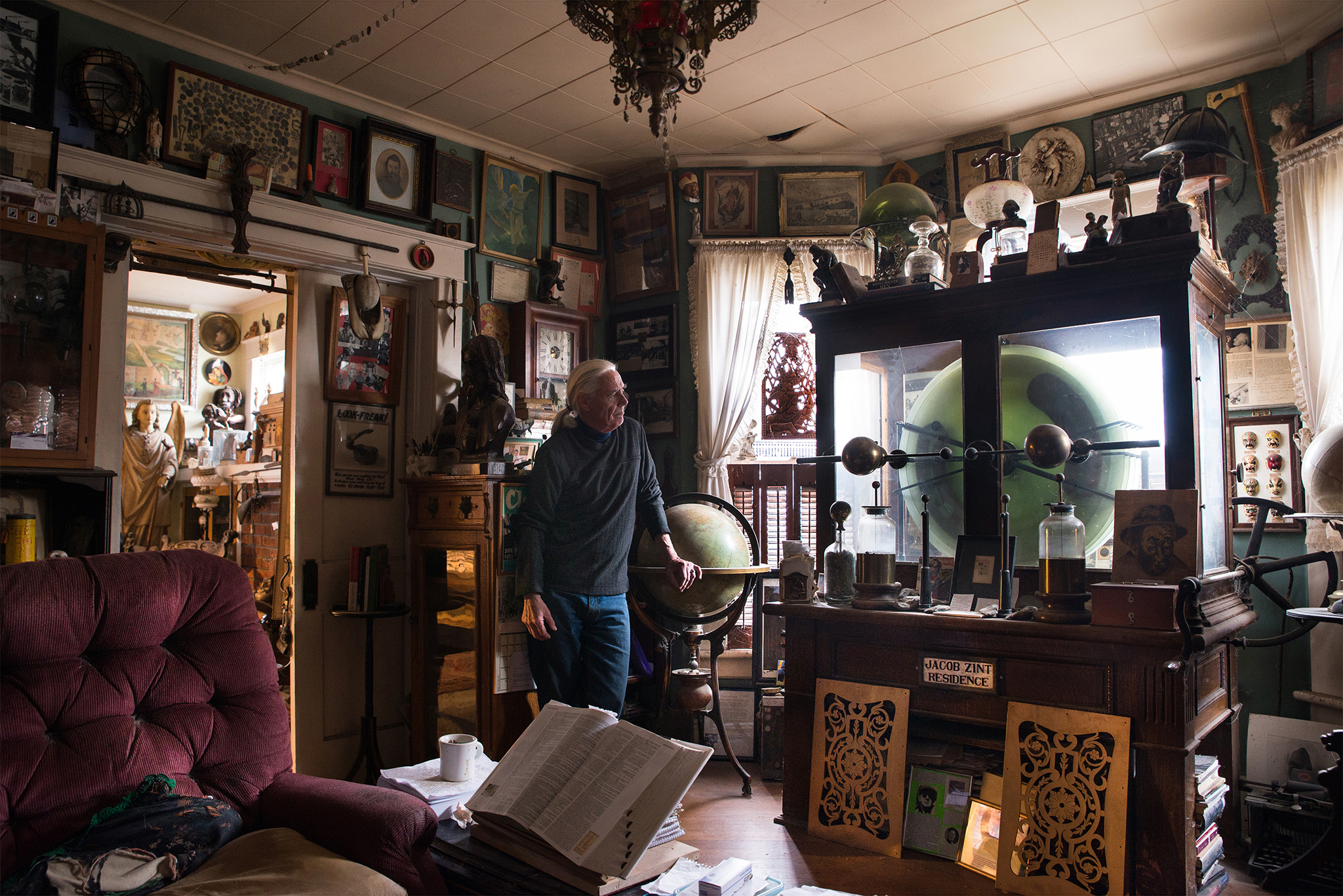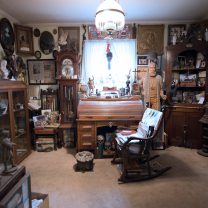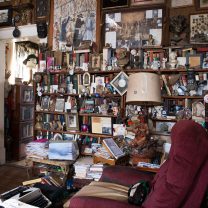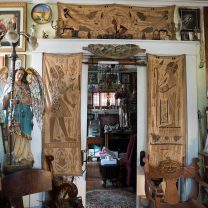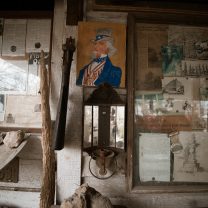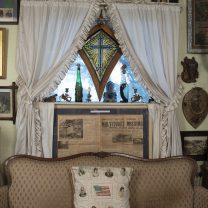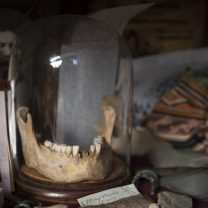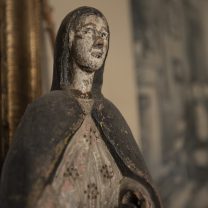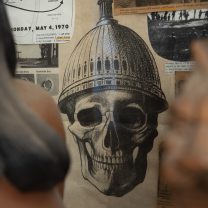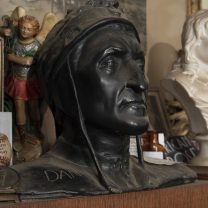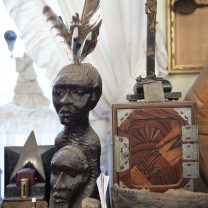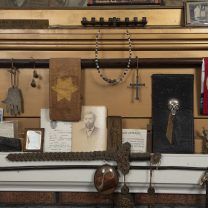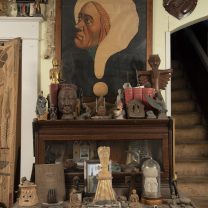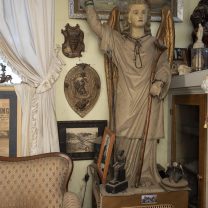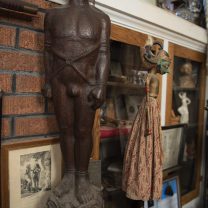
The Bowsher Home: A Cabinet of Curiosities
For over 60 years, Jim Bowsher has been a historian and collector. His belief that objects are “witnesses of history,” permeated with the essence of a historical moment, has led him to acquire a wide range of items whose significance lies in the histories they preserve. These objects can be iconic—a soda bottle melted in Hiroshima’s atomic blast—or mundane, such as a piece of wax fruit. Through Jim’s storytelling, the deeper histories of each object, and the individuals who owned them, are revealed.
 Jim’s boundless curiosity spans subject matter and themes; American wars, the civil rights movement, archaeology, folklore and superstition are all well-represented in his collection. Bowsher’s home contains such significant items as a childhood cup belonging to the assassin James Earl Ray (left), a doll given to a child Auschwitz internee by notorious Nazi Joseph Mengele, and the 1875 sales receipt for the purchase of a child slave, along with the torn Kentucky bill which helped ensure his safety during his escape via the Underground Railroad. Alongside these rare historical items one can find everyday objects—family photos, keychains—which have little intrinsic or historical value but represent deeply personal events in an otherwise forgotten individual’s life. Through the preservation of these objects, and the stories they inspire, the lives of these individuals are sustained for a new generation.
Jim’s boundless curiosity spans subject matter and themes; American wars, the civil rights movement, archaeology, folklore and superstition are all well-represented in his collection. Bowsher’s home contains such significant items as a childhood cup belonging to the assassin James Earl Ray (left), a doll given to a child Auschwitz internee by notorious Nazi Joseph Mengele, and the 1875 sales receipt for the purchase of a child slave, along with the torn Kentucky bill which helped ensure his safety during his escape via the Underground Railroad. Alongside these rare historical items one can find everyday objects—family photos, keychains—which have little intrinsic or historical value but represent deeply personal events in an otherwise forgotten individual’s life. Through the preservation of these objects, and the stories they inspire, the lives of these individuals are sustained for a new generation.
A Note on the Collection
In order to preserve his countless stories and document his original research, Jim has framed photos of his collected objects (or in some cases, the objects themselves), along with a typewritten account of the object’s acquisition, newspaper clippings and other materials he amassed in the process of research. Many of these frames are presented in the Explore the Collection menu.
